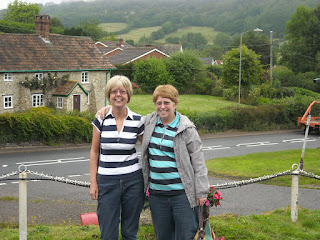 |
| Transcribing a Tucker will for Pharos |
I could suggest that E is for Edsall, some ancestors in Downton, Wiltshire - the very place I wrote about yesterday. Sadly I know nothing about them. I do have DNA matches suggesting our link is through the Downton Edsalls.
They could well have been agricultural labourers, but since my Edsalls were baptised, married and buried in the 17th century, I simply do not know.
So today's topic will be
e-Learning.
From the mid-1980s, I was an early adopter of computer technology both at work and at home. Being an ex-librarian, I could see their value. In retirement, I studied an IT Certificate III at
Baulkham Hills TAFE with students 40 years my junior in 2004-5. The previous year, I had completed my first e-Learning certificate in accessible web design through an American company.
 |
| Learning about indentures with Pharos |
So it was a natural progression to find some online genealogy courses. By 2014, I'd completed a
Pharos Certificate in Family Skills and Strategies (Intermediate) Level. Based mostly on English family history, this was the most relevant course for me since my ancestors within documented timescales are all English or Scottish. I loved these units and completed not only assessable courses leading to the Certificate qualification but also others which attracted my interest.
There is also an Advanced Certificate on offer, but currently, it includes the necessity to spend time in English archives, so is impractical at the moment.
After completion, I looked elsewhere and came across the
National Institute for Genealogical Studies (NIGS). This is based in Canada but the lecturers include many Australian and English genealogy experts whom I have come to know and respect. I was well on my way to earn a basic certificate with NIGS when I heard about the University of Tasmania's new online course Introduction to Family History. It was just one course at the beginning but soon turned into a Diploma. I simply couldn't resist the units on offer, so put aside my NIGS studies. I can always go back to it.
 |
| UTAS online learning mates at Sydney conference |
By 2017, I had completed my
Diploma of Family History at the University of Tasmania, all online. This course focussed on Australian family history, but much of the information can be useful for any research. Whilst I didn't go to Hobart for the graduation, or attend a later one in Sydney (April 2018),
 |
| Jacqui & Marg meet in person |
I have made a great number of like-minded friends through this course. For each unit, we had both official support groups as well as student-driven groups on Facebook. I have met many of these "friends" at conferences and seminars since then.
 |
| Meeting at Western Sydney - Xmas at IKEA |
Additionally, geographically based study and sharing groups have been set up, and I regularly meet with a dozen or so graduates and students for coffee in Western Sydney. We share our successful discoveries, family stories and photo books.
Sadly, we cannot meet face-to-face at the moment due to the pandemic, but make the most of Facebook.




































